9 Secrets About Ruth's Chris Steak House You Never Knew
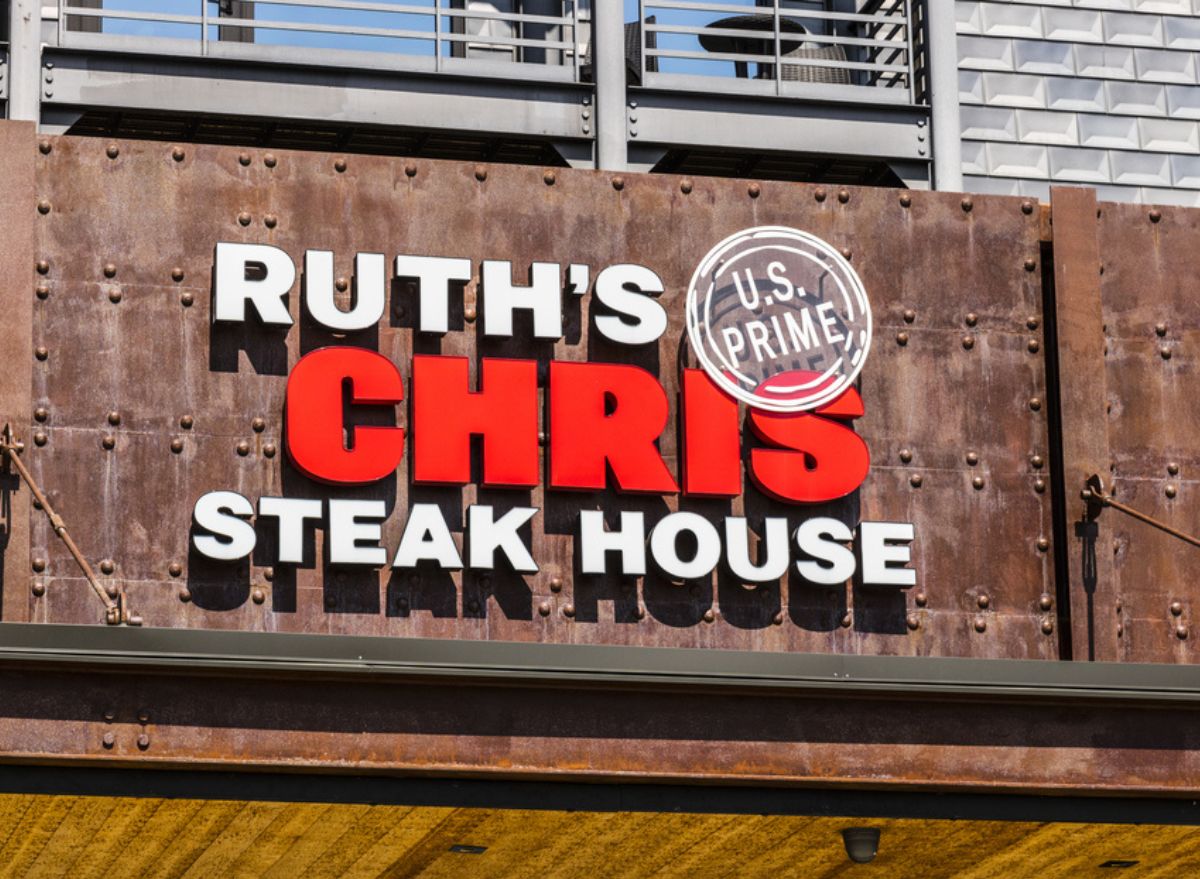
An upscale but approachable restaurant, Ruth's Chris sits somewhere between a casual dining chain, like an Outback Steakhouse, and a less approachable spot like The Palm. It's a favorite for people who want a great meal they can enjoy sans suit jacket that won't leave their wallet smarting—too much anyway.
The history of Ruth's Chris Steak House stretches back nearly 100 years. The progenitor of the modern chain was established in 1927 in New Orleans by a man named Chris Matulich, for whom the chain is—in part—known today.
Today, there are more than 140 Ruth's Chris Steak House locations worldwide, and the chain generates nearly a half billion dollars in annual revenue—though the COVID-19 pandemic did put a serious hit on the chain in 2020. If you're headed out to dine at this uber-popular steak chain, there are some secrets you should know before you go.
The steaks are not grilled
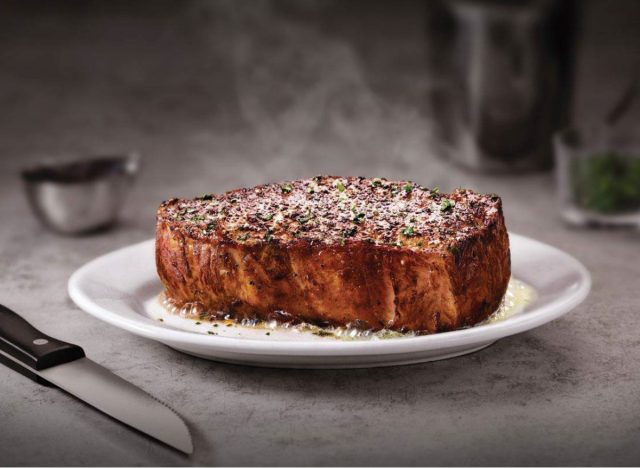
You cannot grill steak that will compete with the steaks at Ruth's Chris. You could buy a top-quality steak and grill it on your backyard grill but it will never taste like a steak made at the restaurant because they broil their steaks. But don't think you can just toss yours in your home oven, because that won't work either. The special infrared broilers at Ruth's Chris get up to a fiery 1800 degrees, yours will probably only reach 550 degrees max. Plus, you're probably going to set the smoke alarm off at that temp.
Failure kept the original steak house in its owner's hands
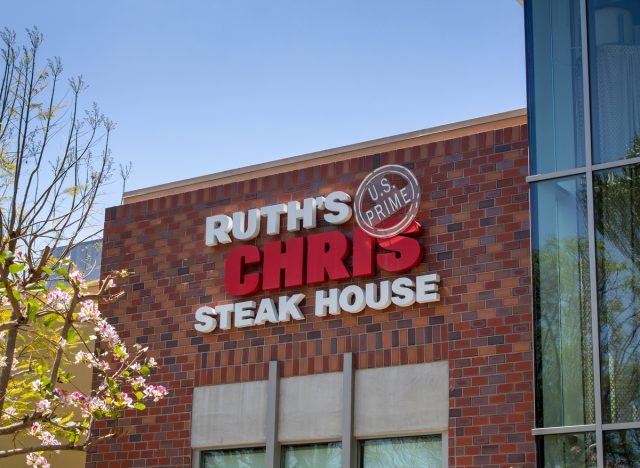
The original Chris Steak House, opened in 1927 as noted, was largely a failure of a business. According to Funding Universe, its founder, Chris Matulich, sold the restaurant off several times only to buy it back for less each time the new owners failed again. He maintained semi-regular ownership of the steak house in this way for nearly 40 years.
The name came because of a fire

After buying Chris Steak House in 1965, Ruth Fertel operated the restaurant at its original location for a dozen years before a fire forced her to close it down. She relocated operations to a larger property nearby but, due to an agreement in the purchase contract she had signed, Fertel could not call the restaurant Chris Steak House at any location but the original. So she slyly added her own name to the front of the title and got right back to work.
Ruth Fertel hated the name
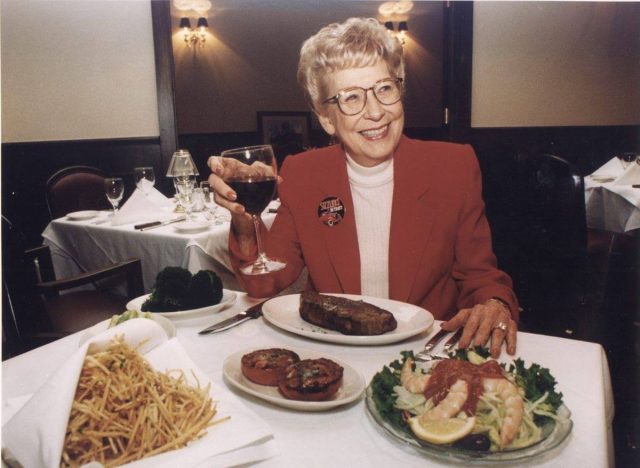
According to Fortune Magazine, Ruth Fertel, who passed away in 2002 at the age of 75, "always hated the name" of her chain of steakhouses. She thought it was awkward and clunky but said "we've always managed to work around it," and indeed she and the many others involved with the highly successful chain did just that.
The steaks are often intentionally undercooked
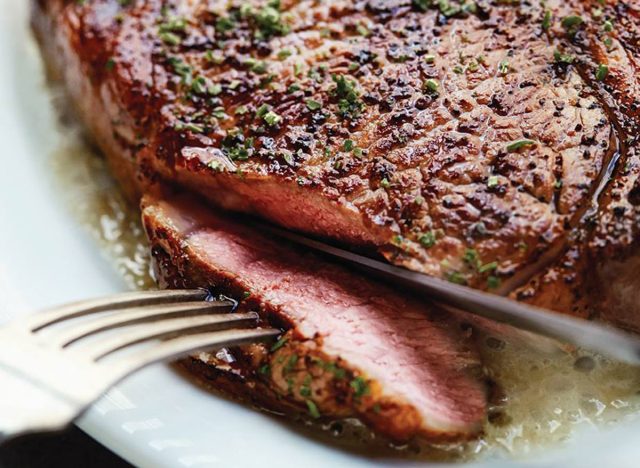
Why would a steak house that prides itself on the quality of its steaks intentionally undercook a piece of meat? It's because of those 500ºF plates the steaks are served on. The kitchen knows the meat will keep cooking on the hot plate, so they stop it from cooking a bit before it's done and then quickly plate the steak.
The butter is largely a gimmick
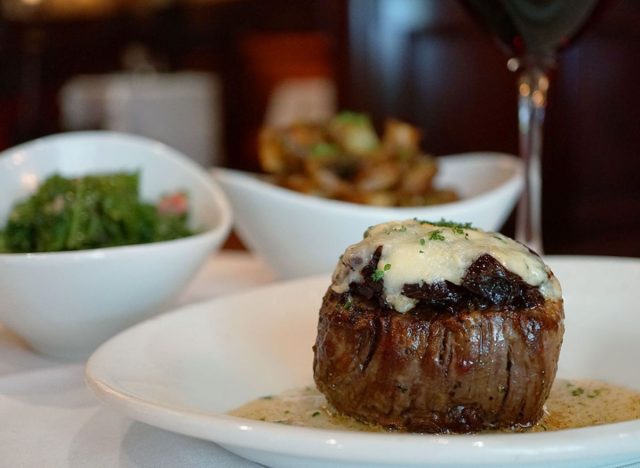
Adding a dollop of butter on top of a warm steak can add flavor (and fat) for sure, but the butter placed atop a Ruth's Chris steak is more about sizzle than taste. Ruth Fertel herself once said: "You hear that sizzle, and you think: 'I wonder if that's my steak?'" It's not, though—it's the butter sizzling on the hot plate. Chili's uses this audible sizzle too to make customers crave their fajitas.
The steaks are wet-aged
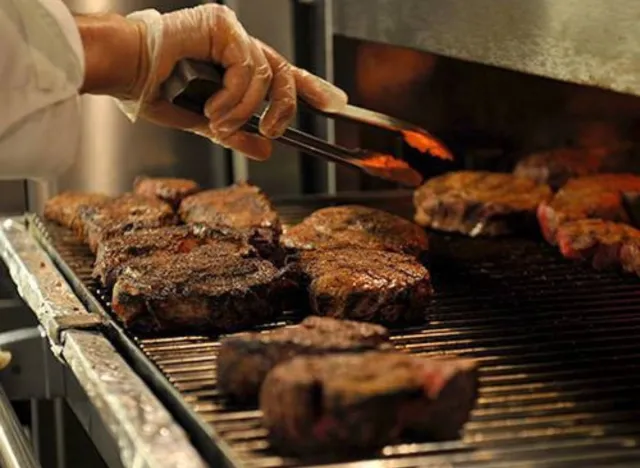
The best steaks you can get are dry-aged, meaning the meat is hung in a temperature- and humidity-controlled space for a period of time (usually weeks) during which enzymes begin to break down the meat, making it more tender and flavorful. It's a slow and pricey process, as the meat loses water weight as it ages.
Ruth's Chris (like many restaurants, to be fair) would rather not wait around for the meat to be ready, thus they use the faster, cheaper wet-aging approach, which involves storing cut steaks in air-tight bags at low temperatures for a week or so, according to Cattlemen's Steakhouse. It still ages and tenderizes the meat, but not as well as dry-aging.
Ruth's Chris took $20 million in government relief during the pandemic
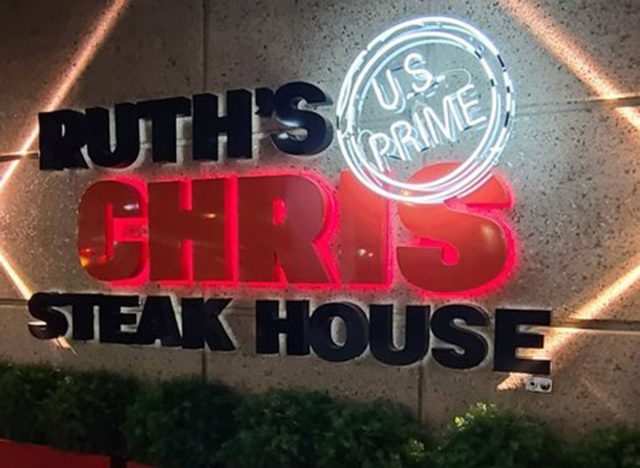
Per NBC News, in the early days of the pandemic, Ruth's Chris applied for government relief and received $20 million from a federal government program meant to help small businesses. This was an international chain of upscale steakhouses getting money intended for one-off mom-and-pop type shops. Understandably, there was a public outcry, and under pressure, the chain returned the money.
The chain raised prices but hoped you wouldn't notice
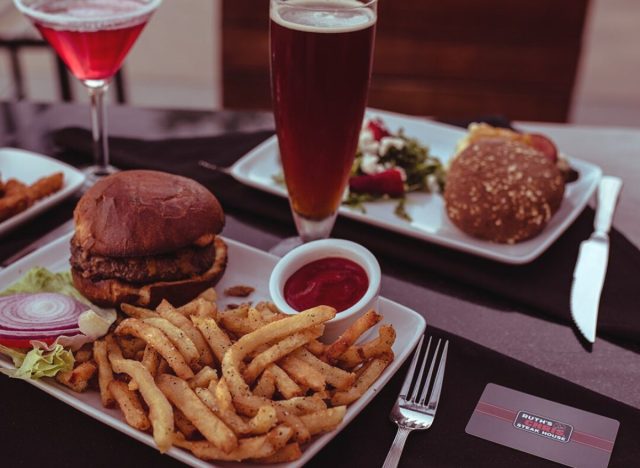
According to Nation's Restaurant News, Ruth's Chris Steak House raised its menu prices last year, but it did so in such a way it hoped customers would not notice. Calling it a "surgical" increase in pricing, the chain elevated prices by just 2.5%, not enough to elevate the eyebrows of most diners. But for a chain dealing with sales in the hundreds of millions of dollars, that's a change that likely generated tens of millions of dollars.
A previous version of this post was originally published in Nov. 2022. It has been updated with new information.









